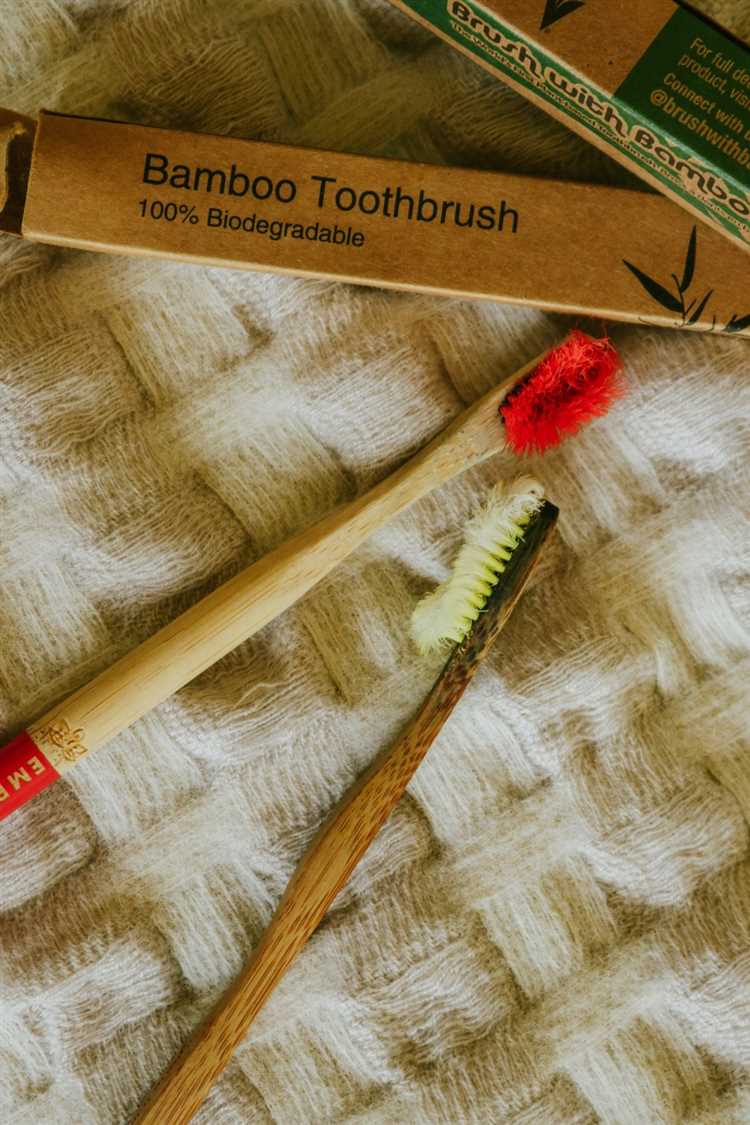
When it comes to our everyday items, we often don’t think about what happens to them after we dispose of them. One such item is the toothbrush. We use it twice a day, but what happens to it once we’re done with it? How long does it take for a toothbrush to break down and decompose?
Toothbrushes are made of several different materials, including plastic, rubber, and nylon bristles. Their combination of materials makes them durable and efficient for cleaning our teeth. However, this durability also means that it takes a significant amount of time for a toothbrush to break down naturally.
The length of time it takes for a toothbrush to decompose depends on various factors, such as the type of plastic used, the environment it is disposed of in, and the conditions it is exposed to. On average, it can take anywhere from 500 to 1,000 years for a toothbrush to fully decompose.
The plastic used in toothbrushes, typically polypropylene, is not biodegradable and does not break down easily. Over time, however, the plastic may start to break into smaller pieces due to exposure to sunlight, heat, and moisture. This process is known as photodegradation. While the plastic may appear to have “disappeared,” it has simply broken down into smaller, microscopic particles known as microplastics.
Even though toothbrushes take a long time to decompose, it is important to dispose of them properly. Recycling is one option, but many recycling programs don’t accept toothbrushes due to the difficulty in separating the different materials. It is best to check with your local recycling facility to see if they accept toothbrushes.
In conclusion, toothbrushes take a significant amount of time to break down and decompose due to their combination of materials, primarily plastic. Understanding the decomposition time of everyday items like toothbrushes is important to raise awareness about the impact of waste on our environment and to encourage more sustainable choices in our daily lives.
- Understanding Decomposition Time
- Factors Affecting Decomposition Time
- Material Composition
- Environmental Conditions
- Decomposition Time of Toothbrushes
- The Environmental Impact
- Microplastics
- Sustainable Alternatives
- Alternatives to Plastic Toothbrushes
- Bamboo Toothbrushes
- Biodegradable Toothbrushes
- Recycled Plastic Toothbrushes
- Electric Toothbrushes
- Q&A:
- How long does it take for a toothbrush to decompose?
- Why does it take so long for a toothbrush to break down?
- Is there an alternative to plastic toothbrushes that decomposes faster?
- What impact does toothbrush waste have on the environment?
- Are there any ways to recycle toothbrushes?
Understanding Decomposition Time
The concept of decomposition time is an essential factor in understanding the environmental impact of different materials. It refers to the length of time it takes for a material to break down and return to its natural state.
When it comes to toothbrushes, understanding their decomposition time is crucial because they are commonly used single-use items that contribute to plastic waste. Most toothbrushes are made from plastic, specifically polypropylene (PP) for the handle and nylon for the bristles.
Plastic is a durable material and can take hundreds of years to decompose naturally. This means that a plastic toothbrush discarded today could still be around in the environment long after we are gone.
The decomposition process of a toothbrush starts with the breakdown of its material. Exposure to various environmental factors, such as sunlight, heat, and moisture, gradually weakens the structure of the plastic. Over time, the plastic breaks down into smaller and smaller fragments.
Microorganisms in the soil or water play a vital role in further decomposing the plastic fragments. However, the decomposition process of plastic is slow compared to other organic materials. This is because plastics are made of synthetic polymers that are resistant to microbial activity.
It’s important to note that while toothbrushes made from bamboo or other biodegradable materials are available, they still require specific conditions to decompose. Without the right conditions, even biodegradable toothbrushes may persist in the environment for an extended period.
In summary, understanding the decomposition time of toothbrushes is crucial in comprehending the long-term environmental implications. By using more sustainable toothbrush alternatives or opting for compostable options, we can minimize our impact on the environment and work towards a cleaner, greener future.
Factors Affecting Decomposition Time
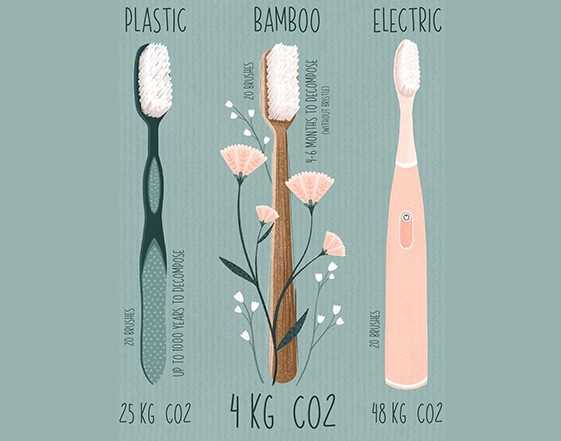
The time it takes for a toothbrush to decompose can vary due to several factors. These factors include:
Material Composition
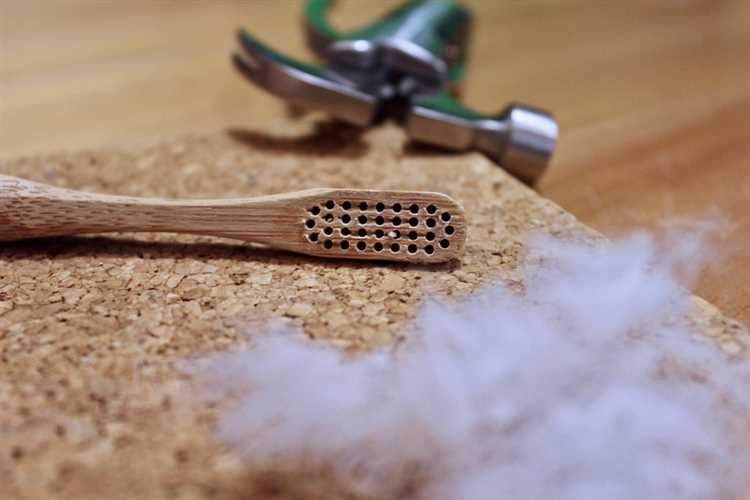
The material composition of a toothbrush plays a significant role in its decomposition time. Most toothbrushes are made from a combination of plastic polymers, such as polypropylene or nylon, and rubber. These materials do not readily break down in the environment and can persist for hundreds of years. However, toothbrushes made from biodegradable materials, such as bamboo or cornstarch-based plastics, decompose much faster.
Environmental Conditions
The environmental conditions in which a toothbrush is exposed to also affect its decomposition time. Factors such as temperature, humidity, and exposure to sunlight can accelerate or slow down the decomposition process. In general, toothbrushes exposed to warmer and more humid conditions tend to decompose faster.
Proper Disposal
The way a toothbrush is disposed of can significantly impact its decomposition time. When toothbrushes are thrown into regular trash bins, they often end up in landfills where they may take a long time to decompose due to the lack of oxygen and sunlight. On the other hand, toothbrushes that are recycled or composted can decompose more quickly and have a lower environmental impact.
In conclusion, the decomposition time of a toothbrush can be influenced by factors such as the material composition, environmental conditions, and proper disposal methods. Choosing toothbrushes made from biodegradable materials and ensuring they are properly disposed of can help reduce their environmental impact.
Decomposition Time of Toothbrushes
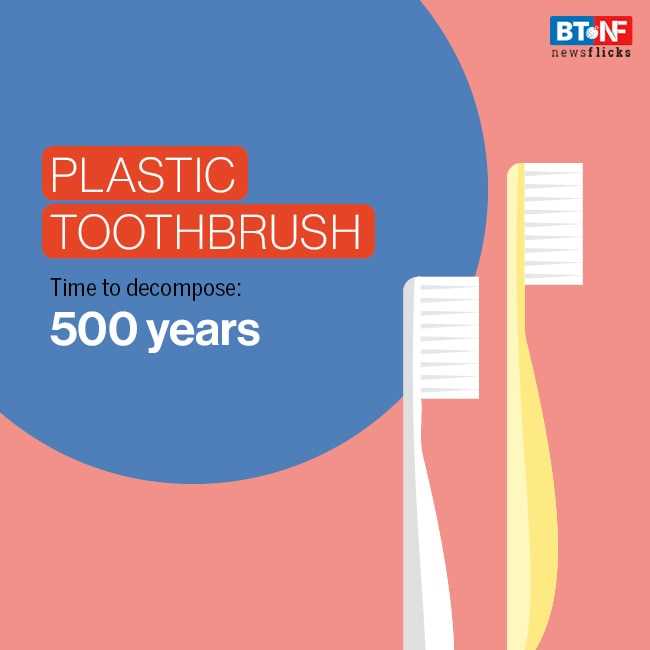
Toothbrushes, which are commonly made of plastic, can take a surprisingly long time to decompose. This is problematic, considering the millions of toothbrushes that are discarded every year and end up in landfills or polluting the oceans.
The decomposition time of a toothbrush can vary depending on several factors, such as the type of plastic used and environmental conditions. On average, it is estimated that a plastic toothbrush can take anywhere from 500 to 1,000 years to fully break down.
The main issue lies in the fact that most toothbrushes are made from polypropylene plastic, which is a type of plastic that is not biodegradable. This means that the microorganisms responsible for breaking down organic matter cannot naturally break down polypropylene, leading to its persistence in the environment for centuries.
While some toothbrush manufacturers have started using alternative materials, such as biodegradable bamboo or plant-based plastics, these options are not yet widely available or affordable for most consumers. Currently, the majority of toothbrushes on the market are still made of non-biodegradable plastic.
In recent years, there has been a growing awareness about the environmental impact of plastic toothbrushes, leading to the rise of eco-friendly alternatives. Some individuals have switched to using toothbrushes made from sustainable materials or toothbrushes with replaceable heads, which reduce waste by allowing only the head to be replaced instead of the entire toothbrush.
It is important for consumers to be conscious of the decomposition time of toothbrushes and make more sustainable choices when it comes to oral hygiene. By opting for toothbrushes made from biodegradable materials or toothbrushes with replaceable heads, individuals can contribute to the reduction of plastic waste and the preservation of our environment.
The Environmental Impact
The environmental impact of toothbrushes is a significant concern in today’s society. With billions of toothbrushes being used and discarded each year, their impact on the environment cannot be ignored.
One of the major environmental issues posed by toothbrushes is their contribution to plastic pollution. Most toothbrushes are made of plastic materials, particularly the handles which are often made of polypropylene or polyethylene. These plastics are not biodegradable and can persist in the environment for hundreds of years.
When toothbrushes are disposed of improperly, they can end up in landfills, where they take up valuable space and contribute to the growing problem of solid waste. If toothbrushes are incinerated instead, they release harmful pollutants into the air, further contributing to air pollution.
Microplastics
Another issue related to toothbrushes is the release of microplastics into the environment. As toothbrushes degrade over time, they can shed tiny plastic particles that are too small to be filtered out by wastewater treatment plants. These microplastics can then enter rivers, lakes, and oceans, where they can be ingested by marine life and ultimately make their way into the food chain.
The presence of microplastics in the environment has become a major concern due to the potential harm they can cause to ecosystems and wildlife. These particles are known to absorb and accumulate toxic chemicals, which can then be transferred to organisms that ingest them. This can lead to a variety of health issues for marine life and, ultimately, humans.
Sustainable Alternatives
In order to reduce the environmental impact of toothbrushes, it is important to consider sustainable alternatives. One option is to choose toothbrushes made from biodegradable materials, such as bamboo or cornstarch-based plastics. These materials can break down naturally over time and have a lower impact on the environment.
Another alternative is to use electric toothbrushes, which typically have replaceable heads. This reduces waste as only the head needs to be replaced, rather than the entire toothbrush. Additionally, some companies offer toothbrushes with recyclable or compostable handles, further reducing their environmental footprint.
It is also crucial to properly dispose of toothbrushes at the end of their life cycle. This may involve recycling them if possible or seeking out specialized recycling programs that accept toothbrushes. By taking responsible actions, individuals can help minimize the environmental impact of toothbrushes on our planet.
In conclusion, the environmental impact of toothbrushes is a significant issue that should be addressed. Plastic pollution, the release of microplastics, and improper disposal methods all contribute to the negative impact of toothbrushes on the environment. By choosing sustainable alternatives and adopting responsible disposal practices, we can mitigate these effects and work towards a healthier planet.
Alternatives to Plastic Toothbrushes
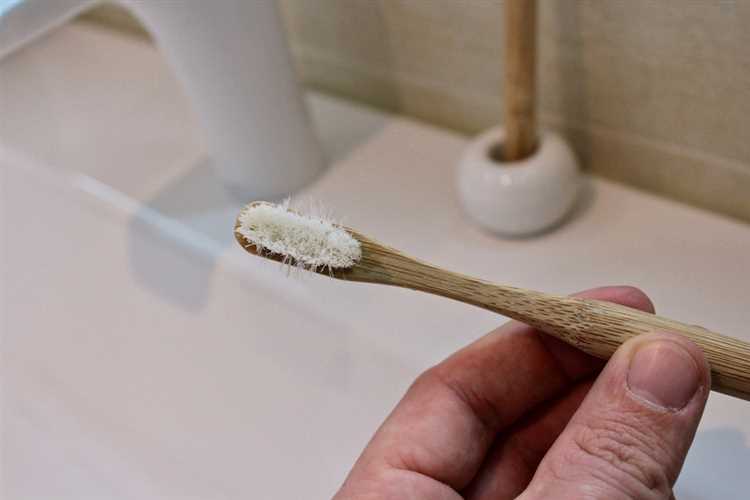
Plastic toothbrushes contribute to the growing problem of plastic pollution in our oceans and landfills. Fortunately, there are several eco-friendly alternatives to plastic toothbrushes that can help reduce our environmental impact. Here are some options:
Bamboo Toothbrushes
Bamboo toothbrushes are a popular alternative to plastic toothbrushes. Bamboo is a renewable resource that grows quickly and is biodegradable. Many bamboo toothbrushes also come with bristles made from plant-based materials, further reducing their environmental impact.
Biodegradable Toothbrushes
Biodegradable toothbrushes are made from materials that can break down and decompose naturally. These toothbrushes are typically made from materials such as cornstarch, wheat straw, or rice husks. They offer a sustainable alternative to plastic toothbrushes without sacrificing functionality.
Recycled Plastic Toothbrushes
Another option is to choose toothbrushes made from recycled plastic. These toothbrushes are created using plastic materials that have been previously used and would otherwise end up in landfills. By choosing recycled plastic toothbrushes, you can help reduce the demand for new plastic production.
Electric Toothbrushes
Electric toothbrushes are another alternative to consider. While they do require electricity to operate, they often have replaceable brush heads, reducing waste compared to traditional plastic toothbrushes. Look for electric toothbrushes with rechargeable batteries to further minimize environmental impact.
By choosing one of these alternatives to plastic toothbrushes, you can make a positive impact on the environment and reduce the amount of plastic waste produced.
Q&A:
How long does it take for a toothbrush to decompose?
A toothbrush takes approximately 400-500 years to decompose.
Why does it take so long for a toothbrush to break down?
Most toothbrushes are made of plastic, specifically polypropylene, which is not easily biodegradable. This is why it takes a long time for a toothbrush to break down.
Is there an alternative to plastic toothbrushes that decomposes faster?
Yes, there are alternatives to plastic toothbrushes. Some options include toothbrushes made from bamboo or other biodegradable materials, which can decompose within a few years.
What impact does toothbrush waste have on the environment?
Toothbrush waste has a significant impact on the environment. Plastic toothbrushes contribute to the growing problem of plastic pollution, which harms marine life and ecosystems. Additionally, the production and disposal of toothbrushes contribute to carbon emissions and climate change.
Are there any ways to recycle toothbrushes?
Some companies offer toothbrush recycling programs, where you can send back your old toothbrushes for proper recycling. Additionally, the bristles on most toothbrushes can be removed before recycling, as they are not easily recyclable.